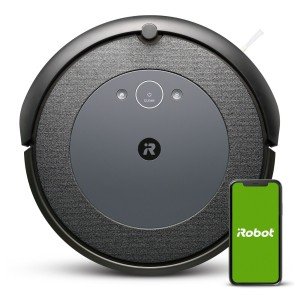The Rise of Robot Vacuum Cleaners in Industrial Settings
In the last few years, the landscape of industrial cleaning has actually experienced a considerable improvement with the intro of robot vacuum. automatic floor cleaner automated devices are not just a novelty for homes; they have actually gotten traction in storage facilities, making plants, and other industrial environments. This post checks out the functionality, benefits, and factors to consider of robot vacuum within the industrial context, while responding to some often asked questions.
What are Robot Vacuum Cleaners?
Robot vacuum are automated cleaning gadgets equipped with sophisticated sensing units and innovation that enable them to browse around areas, discover dirt, and vacuum surface areas without direct human intervention. In industrial settings, they are designed to deal with a variety of debris types, assist in regular cleaning schedules, and enhance total functional effectiveness.
Table 1: Key Features of Industrial Robot Vacuum Cleaners
| Function | Description |
|---|---|
| Navigation | Utilizes LiDAR or camera-based navigation for exact mapping. |
| Size and Design | Compact and robust style to fit in tight spaces and hold up against difficult environments. |
| Self-Charging | Instantly go back to its docking station for charging. |
| Dustbin Capacity | Bigger dustbin matched for industrial debris sizes and volumes. |
| Programs | Can be programmed for scheduling and particular cleaning tasks. |
| Data Collecting | Equipped with sensing units to gather information for upkeep and cleaning analysis. |
Advantages of Robot Vacuum Cleaners in Industrial Settings
The adoption of robot vacuum cleaners features a myriad of advantages:
Increased Efficiency:
- 24/7 Operation: Unlike human cleaners, robots can operate all the time, adding to constant cleanliness without downtime.
- Time-Saving: Automated cleaning enables employees to focus on core tasks rather than cleaning responsibilities.
Cost Savings:
- Labor Costs: Maintaining a robot vacuum can decrease the requirement for a large cleaning personnel, lowering overall labor expenses.
- Functional Efficiency: With enhanced tidiness and lowered downtime due to maintenance problems, companies can minimize functional expenses.
Enhanced Safety:
- Reduced Risk: By reducing the human participation in harmful cleaning environments, the threat of mishaps is minimized.
- Constant Cleaning: Robot vacuums ensure that locations are regularly cleaned up, lowering slip risks and unhealthy environments.
Increased Flexibility:
- Customizable Cleaning Routes: These devices can be programmed to clean particular locations or floorings, adapting to altering industrial designs.
- Range of Surfaces: Industrial robot vacuums can deal with various flooring types, from concrete to tiles, making them versatile.
Environmental Impact:
- Sustainable Cleaning Solutions: Many designs use very little water and environmentally friendly cleaning options, aiding in business sustainability efforts.
Table 2: Industrial Applications of Robot Vacuum Cleaners
| Industry | Application |
|---|---|
| Production | Cleaning assembly line and assembly areas. |
| Warehousing | Maintaining tidy and orderly storage spaces. |
| Food Processing | Making sure tidiness in delicate areas to meet hygiene requirements. |
| Pharmaceuticals | Keeping ultra-clean environments for production. |
| Logistics and Distribution | Keeping pathways clear for effective operation. |
Challenges and Considerations
While the advantages are considerable, services must also consider numerous difficulties:
- Initial Investment: The in advance expenses of buying industrial robot vacuum can be considerable, though long-lasting savings may offset this cost.
- Repair and maintenance: Regular maintenance is necessary to keep the robotic systems operating optimally, and repair work can incur extra costs.
- Combination: Businesses may require to integrate these makers into existing workflows, which can need time and adjustment.
- Training and Support: Staff may need training to successfully manage these makers, particularly when repairing or shows is needed.
FAQs About Robot Vacuum Cleaners in Industrial Settings
1. Just how much do industrial robot vacuum cost?
The cost can vary from a couple of thousand to tens of countless dollars, depending on specifications, features, and brand.
2. What types of surface areas can they clean up?
Robot vacuum appropriate for various surface areas consisting of carpets, tiles, concrete, and even some wood floorings.
3. How do they browse complex industrial environments?
A lot of industrial robot vacuums utilize advanced navigation systems like LiDAR, cameras, and sensing units to map out and adjust to their environments for efficient cleaning.
4. Can they clean large locations without human intervention?
Yes, industrial robot vacuums are created to tidy comprehensive areas with predetermined paths and schedules, effectively running autonomously.
5. Are these robots environmentally friendly?
Many models focus on effectiveness and lower water use, making them a more eco-friendly cleaning alternative compared to conventional techniques.
The intro of robot vacuum cleaners into industrial environments symbolizes an amazing development in cleaning innovation. With their ability to improve effectiveness, decrease labor expenses, and keep security, these automated systems are leading the way for smarter and cleaner industrial operations. While sneak a peek at this website may exist, the long-term benefits and technological developments are encouraging for markets looking for to enhance their cleaning procedures. As innovation continues to evolve, we can anticipate further developments in robot vacuum that will transform industrial cleaning practices a lot more.

